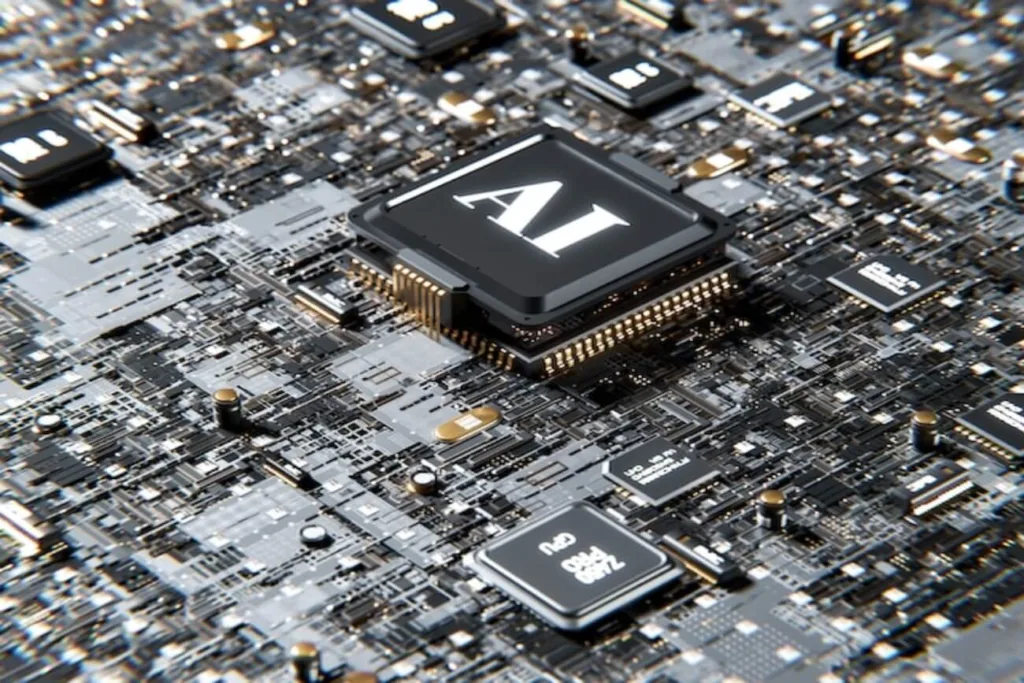Background
Cybersecurity is an ever-evolving landscape with new challenges being presented every day. Technologies grow, and new tools are implemented to protect businesses from Cybercriminals. At the same time, cybercriminals (hackers) tend to be ahead of the curve with new ways to cause harm. In this blog post, we will explore some of the current and evolving trends in cybersecurity for 2024. If you are considering a career in security or already in the field, we will highlight some of the things you should be aware of this year.
Let’s begin by taking a look at the current state of the Security landscape – the current challenges.
Current Challenges and Trends in Cybersecurity
1. Data Breach
A data breach is a security incident that affects personal data. It exposes protected or confidential information to someone without the right to have it. There are huge cost implications for a data breach both to an enterprise and to the individuals whose data have been breached. Data collected from Data breaches are used to perpetuate several other forms of cybercrimes including Identity theft, and extortion. According to the IBM Data Breach Report for 2023, the annual cost for a Data Breach globally in 2023 was $4.45 million, a value that represents a 15 percent increase in the past 3 years. The Healthcare Industry was ranked worst hit by a Data breach.
Besides this cost and its continual increase, the average time it takes for most organizations to identify a Data breach (Mean Time to Identify) and to clean up the data breach (Mean Time to contain) was 277 days according to the same IBM report above. The two leading scenarios for Data breaches in most Organizations were Phishing attacks and Credentials Compromise. Data Breaches are a major drain in the current cybersecurity ecosystem and may remain so for some significant time.
2. Ransomware Attacks
Ransomware attacks have remained one of the most prevalent cybersecurity challenges to individuals, organizations, and even the Government. According to Cybercrime Magazine, Ransomware attacks globally are projected to cost victims $265 billion annually by 2031. This figure was just $325 million in 2015.
In a Ransomware attack, a hacker can encrypt valuable data that belongs to an individual (or organization), making them unavailable for use. They then demand some form of payment (usually in the form of money that will be difficult to trail e.g cryptocurrencies like bitcoin) for them the unencrypt it. They usually employ public key cryptography to encrypt your data and deny you access to them. Public key cryptography is impossible to unencrypt unless you have the corresponding private key.
Ransomware results in the loss of sensitive data and money due to extortion by cybercriminals. Ransomware can also result in data breaches where the hacker releases sensitive data to the public or unauthorized persons.
3. MFA Implementation
Multifactor Factor Authentication or MFA is not new in the Industry but it is finding increased adoption and usage, especially by large organizations. The idea is that users will have to properly prove to the system that they have the authority to use the system by a combination of at least 2 factors. Those factors can either be something they know (such as a password), something they have (e.g. card, mobile device with 2FA installed), or something they are (fingerprints, retina scans, etc). The National Institute of Standards and Technology recommends MFAs as an extra layer of security on accounts.
A recent report by Prove Identity finds that at least 60 percent of persons implement MFAs for their online banking applications and 61 percent for their online healthcare portals. There is however a lag in the number of persons who use MFAs on their work account (only 21 percent). MFAs are not perfect (some are vulnerable to SIM Swap attacks) but they can significantly reduce the chances of a security compromise on accounts.
4. Adversarial AI
Adversarial Artificial Intelligence (AI) is an attack specifically designed to cause damage to AI systems by poisoning the datasets that are used to run or train the AI. AI may be used to develop new types of threats and thereby increase the scope of Cybersecurity. Adversarial AI is just one of the possibilities. In 2023, Hackers/Researchers found ways to exploit the Major Chatbots to “misbehave” and perform tasks they were not supposed to perform. The scale is going to increase as more AI tools and applications become available for use.
The good news, however, is that Security experts are also leveraging AI technology to solve some of these challenges. AI in Cybersecurity can be used to do better Security analysis and investigation.
5. BotNet and IoT Attacks
A Botnet is a collection of Internet-connected devices that has been compromised by a malicious attacker. Hackers use Botnets, with their collective computing power to overwhelm a system, causing a Distributed Denial-of-Service attack or DDoS attack. A DDoS attack will deny legitimate users access to valuable network resources. The data in the IoT devices is also of huge concern when an attacker has access to them. In a world where everything can be turned into a computer, from Home appliances, your smart devices, cars, etc., the scale of the problem is greatly amplified.
Botnets can be very expensive in terms of scale and damage. The Mirai Botnet which targeted IoT devices in 2016 affected a sizeable portion of the Internet including CNN, Twitter, the Guardian, Netflix, Reddit, and many more.
5. Quantum Computing
Quantum computers are powerful machines that harness the laws of Quantum mechanics to solve problems that are too complex for conventional computers. They have large computing resources often solving difficult problems in record time. Things can get pretty ugly when such problems are related to security. Many of the current security systems rely on Asymmetric Cryptography to keep things safe. With advances in Quantum computing, there is the real challenge that many of the current cryptographically secure systems may fail in the future. Systems that could have taken years to break may soon be broken in just minutes with Quantum computing.
There is also the concept of “Store Now, Decrypt Later” which is the notion that encrypted data can be harvested now, stored, and then break the encryption with a future technology to reveal the encrypted data. Advances in cryptography will have the potential to crack many of the current encrypted systems.
The National Institute for Standards (NIST) has released a list of four algorithms that are Quantum-safe. These are to mitigate some of the current and future threats that Quantum computing poses to cybersecurity.
Emerging Threats In Cybersecurity With AI

Artificial intelligence is going to play a bigger role in Cybersecurity in 2024. There is already a progression in this direction. We are going to be more dependent on AI (Generative AI, Large Language Models, AI chatbots, etc) to provide us with useful information or data. These data can be tainted, or incorrect, and if we are going to make a decision based on such information, it could pose huge security risks.
The following is a summary of AI-related threats and trends in cybersecurity that are likely to significantly increase in the coming years.
1. AI Phishing
Phishing on its own is pretty expensive and widespread. Google reportedly blocks about 100 million phishing emails daily. Having an AI do the phishing attacks are going to increase the prevalence even further and possibly make detection much more difficult. AI can learn, adapt, and generate a very convincing phishing message to evade detection.
We already have a glimpse of what Generative AI can do, having them integrated into phishing attacks can be devastating. There will not be the usual markers like spelling mistakes, bad grammar, tone, poorly crafted messages, etc.
There is also a direct correlation between Phishing attacks and Ransomware attacks. Phishing attacks are one of the major ways devices get infected with ransomware. If Hackers become more successful with AI phishing, it will also increase the ransomware attacks.
2. Deep Fakes
Trust is at the foundation of human interactions and Deep fakes are attacking this core. Deep Fakes are AI technologies that simulate an individual’s image, voice, and likeness to mislead people. It is creating a digital fake copy of a person’s voice, image, or video and using that identity for deception. Deepfakes are increasingly becoming popular and more difficult to spot. It will make it difficult for people to trust what they see, hear, or watch.
In 2023, An AI tool Midjourney, was used to generate a Deepfake of Pope Francis wearing a designer coat Jacket instead of the Priestly Cassock he is known for. The Deepfakes of other Celebrities and Leaders were shared on Social Media. This may have been some internet meme in some circles but there are real consequences when a hacker with sinister intentions exploits this tool.

Imagine a video of the president of the Stock Market for example making announcements that can alter the prices of stocks, or the president of a country declaring a war, except that those videos are deepfakes. The fallout can be devastating.
Deepfakes are some of the more blatant threats to information and security. It can be used to destroy businesses, ruin a reputation, misrepresent political opponents, extort people, perpetuate various types of scams, misinform people, break security systems, etc. The scope is limitless.
The trend in Cybersecurity as it relates to Deepfakes should not just be developing tools to detect Deepfakes, it should be more on Educating people about Deepfakes so that they are aware of it and better protect themselves and their systems.
3. AI Hallucinations
AI systems are not self-aware and cannot think logically, they can sometimes give strange, confusing, and unexpected answers. These are called Hallucinations. It is simply an AI “just making things up” or making an error with confidence. For example, recommend non-existent books, site authors that don’t exist, create misleading information, false “facts” etc. It is like when a person sees things that are not there – hallucinates.
Hallucination is a significant threat from Generative AI and current efforts are toward reducing its frequency or creating better AI training models. Other technologies like Retrieval Augmented Reality RAG make AI systems better and less prone to Hallucinations. RAG is a technology that improves the capabilities of AI systems by combining AI models with an external knowledge base. This greatly increases accuracy.
For individuals using AI tools, there is a need not to trust every piece of information from AI systems. They make many errors, and there is no automatic way of knowing when they do so. Verify the information an AI gives you. Such information is based on predictions, not on actual logic.
4. AI Emergent Properties
Emergent properties in AI describe the capacity of AI systems to go beyond their original programming, to adapt and learn new capabilities. The emergent properties are not explicitly coded by the creators of the AI. The AI system teaches itself (from its data feed) these skills that they were not expected to have. It mimics the autonomy and intelligence that are naturally human.
An example of this is the Google AI program that adapted on its own to learn Bengali after it was prompted in Bangladeshi Language. The AI on its own learned to translate into Bengali from very few prompts it received, something it was never programmed to do.
One of the more frightening facts about AI’s Emergent Properties is that AI researchers are not sure how and why AI systems develop these properties. It is like having a “black box” in the system, and “block boxes” are not good when it comes to security and safety.
New Approach To Cybersecurity
As the number of threat factors in Cybersecurity is increasing, there is also progress in mitigating them, some of these take the form as follows;
1. Leveraging Security With AI
There is a symbiotic relationship between AI and cybersecurity. You use Cybersecurity to secure AI systems and then in turn use AI to perform security tasks much more efficiently. AI can be a force for good or for evil depending on who is using it. Leveraging the power of AI in Cybersecurity may take some of the following forms;
- Using AI to enhance your existing security architecture. AI is better at some tasks than a human would.
- Using AI tools to detect and mitigate specific AI-targeted attacks such as AI phishing or technologies to detect Deepfakes.
- Using AI to build efficiency. AI tools can swiftly process data from different sources and identify anomalies that may indicate a security challenge.
- Using AI to bridge the skill gaps – there is a global shortage of skilled cybersecurity professionals. AI can therefore act as a force multiplier.
Advances in AI technologies present the security landscape with new challenges, it is simultaneously a force for tackling some of the challenges that AI presents. The “cat and mouse” scenario between a hacker and the security expert will also play out with AI. The good guys will create AI tools for cybersecurity, the bad guys will create a sinister version to cause harm, and vice versa.
2. Transition From Password-Based Systems To Using Passkeys (Fast Identify Online)
There is a progression to move away from Password-based systems to using Passkeys. Password Authentication is a knowledge-based authentication factor, they are prone to phishing attacks, and inconvenient (which makes it less desirable). A transition to Passkeys is a good development in Cybersecurity. If there are no passwords, then there is nothing to phish or compromise.
The design of passkeys is that they are ideally simpler, easier to use, and much more secure than passwords. The FIDO (Fast Identity Online) Standard is an example of this. FIDO was designed by the FIDO Alliance. FIDO is a global authentication program based on public key cryptography. It allows you to authenticate your identity using your biometrics such as your fingerprints or a security key.
The Opportunities
According to recent statistics on the trends in cybersecurity, the cybersecurity market will grow to 300 billion in 2024. This is from a figure of $172 billion in 2023, suggesting that organizations are willing to spend more financially to upgrade their Cybersecurity posture in the coming year. Also, the demand for professionals with Cybersecurity skills is still significantly high, with the US alone having about 570,000 cybersecurity jobs.
The entry-level Cybersecurity salaries are also relatively higher than those of most entry-level jobs. Salary.com puts the range to be $86,434 to $111,904 in the US. There are also a lot of career opportunities within the space, including collaborative work, especially in the field of Artificial Intelligence.
Conclusions
Cybersecurity is constantly evolving and the threat landscape is constantly changing. Every tech innovation is also a tool for the bad guys to use. Data breaches, Ransomware attacks, BotNets, IoT attacks, Adversarial AI, and Quantum computing remain trending themes. AI Poses new threats like Deepfakes, Hallucinations, AI phishing, and Emergent Properties.
There are also other positive aspects such as the use of AI in solving security challenges, increased adoption of multifactor authentication, and transition from Password-based systems to the use of Passkey, etc. On the opportunity front, the demand for Cybersecurity skills and the salary remuneration remain high.
Read: NETWORK SECURITY ESSENTIALS: PROTECTING YOUR INFRASTRUCTURE




